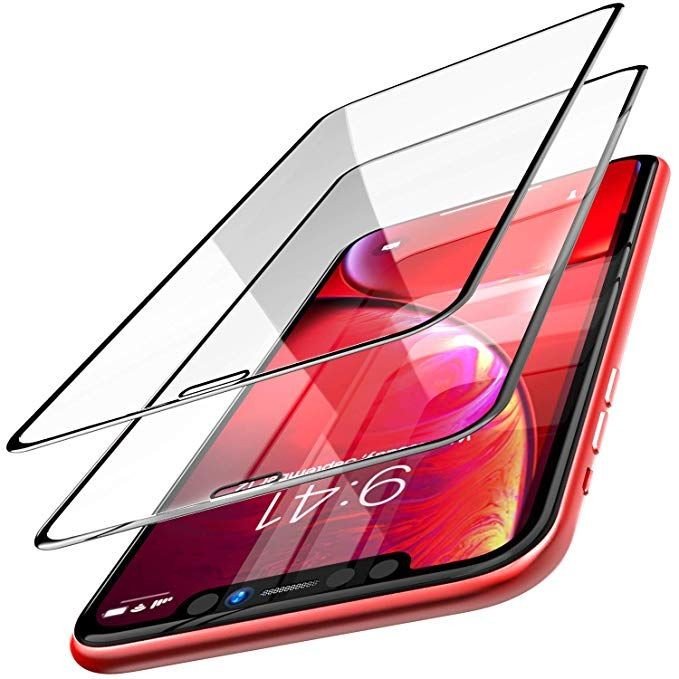The Importance of Using a Screen Protector: Protecting Your Device Investment
In today’s world, smartphones, tablets, and other touch-screen devices have become essential parts of our daily lives. They store our personal information, photos, and even manage our work and social lives. Because of their importance, it’s essential to protect these devices from potential damage. One of the most effective ways to safeguard your device is by using a screen protector.

What Is a Screen Protector?
A screen protector is a thin sheet of material designed to cover your device’s screen, offering an extra layer of protection against scratches, smudges, and other forms of damage. Screen protectors are typically made from materials such as tempered glass, plastic, or polymer. The most popular types are:
- Tempered Glass Protectors: These are made from heat-treated glass and are known for offering excellent protection while maintaining the device’s display clarity. They’re also more durable than plastic alternatives and provide a smoother touch experience.
- Plastic Film Protectors: These are thinner and flexible, typically made of PET (Polyethylene Terephthalate) or TPU (Thermoplastic Polyurethane). While they may not offer the same level of protection as tempered glass, they can help prevent minor scratches.
- Privacy Screen Protectors: These are specialized protectors that prevent others from viewing your screen from an angle. They are perfect for those who want to keep their information private while on the go.
Benefits of Using a Screen Protector
- Prevents Scratches: Over time, your device’s screen can accumulate scratches from everyday use. Items such as keys, coins, or other hard objects can damage your screen. A screen protector acts as a barrier, preventing these objects from coming into direct contact with your device.
- Impact Protection: Accidental drops happen, and while screen protectors can’t fully prevent a shattered screen, they can reduce the risk of cracks and chips. Tempered glass screen protectors, in particular, are known for absorbing shocks, reducing the chance of severe damage to your device’s screen.
- Improves Durability: By protecting your device from everyday wear and tear, a screen protector helps extend the lifespan of your device. This is especially true for those who plan on keeping their device for several years.
- Keeps Your Screen Smudge-Free: Many modern screen protectors have an oleophobic (oil-resistant) coating, which helps reduce fingerprints and smudges. This makes your screen easier to clean and maintain.
- Reduces Glare and Reflection: Some screen protectors are designed to reduce glare, which is useful when using your device in bright sunlight or harsh lighting conditions.
How to Choose the Right Screen Protector
When choosing a screen protector, it’s essential to consider the following factors:
- Material: Decide between a tempered glass protector for superior protection or a plastic film protector for a thinner, more flexible option.
- Compatibility: Ensure that the screen protector is compatible with your device. Some protectors are specifically designed for certain models, providing the perfect fit and coverage.
- Thickness and Quality: For the best protection, choose a thicker, high-quality screen protector. However, make sure it doesn’t interfere with touch sensitivity or the overall display quality of your device.
- Application Ease: Some screen protectors are easier to apply than others. Look for products that offer an easy installation process, such as those with a self-adhesive layer or application tools.
How to Install a Screen Protector
Installing a screen protector can seem like a challenging task, but with a little care and patience, it’s straightforward. Here’s a step-by-step guide:
- Clean the Screen: Use a microfiber cloth to wipe your device’s screen clean of dust, oil, and fingerprints.
- Align the Protector: Carefully align the screen protector with your device’s screen, ensuring that it fits perfectly.
- Apply the Protector: Slowly peel off the backing from the adhesive side of the protector and gently press it onto the screen.
- Smooth Out Bubbles: Use a squeegee or credit card to remove any air bubbles that may have formed during the application process.
- Final Touch: Once the screen protector is fully applied, wipe the surface with a clean cloth to remove any fingerprints or smudges.
Conclusion
A screen protector is a small but essential investment that can help protect your device from scratches, drops, and other damage. Whether you prefer the durability of tempered glass or the flexibility of a plastic film, using a screen protector can keep your device looking new for longer and preserve its resale value. Given the affordable price of screen protectors and the protection they provide, they’re definitely worth considering for anyone who wants to keep their device safe and secure.

